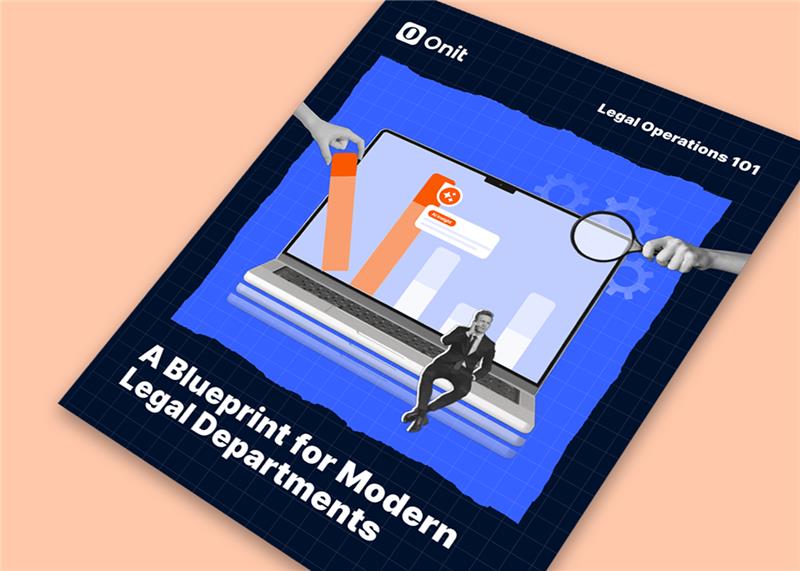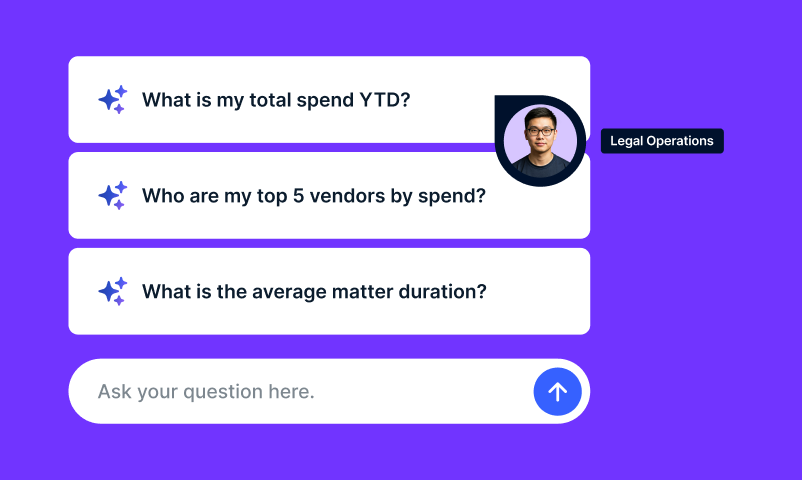
Obwohl es sich keineswegs um neue Technologie handelt, hat sich in der Welt der elektronischen Rechnungsstellung (oder e-Billing) in der Rechtsbranche in den letzten 10 bis 20 Jahren viel getan. Die Pioniere auf dem e-Billing-Markt waren Anbieter, die im Auftrag von Unternehmensjuristen arbeiteten. In den späten 1990er Jahren waren es vor allem Investmentbanken und Versicherungsgesellschaften mit Hauptsitz in den USA, die in Europa Legal e-Billing Software einsetzten. Bald darauf wanderte der Markt nach Europa über, wenn auch auf Betreiben von US-Unternehmen. Im Folgenden werden wir die Geschichte des Legal e-Billings näher beleuchten und auf die frühen Treiber und Hindernisse für die Einführung eingehen.
ERSTE TREIBER DES LEGAL E-BILLINGS IN DEN USA
Die frühen Treiber des e-Billing-Marktes sind auch heute noch relevant. Verschiedene Unternehmen und Jurisdiktionen befinden sich einfach in verschiedenen Stadien ihrer e-Billing-Reife. Die sogenannten „Early Adopters“ sind es, die die Entwicklungen in der Branche vorantreiben, um einen Mehrwert aus ihren Kanzleibeziehungen ziehen zu können. Diejenigen, die noch am Anfang ihrer Entwicklung stehen, werden feststellen, dass diese frühen Treiber für sie derzeit von Bedeutung sind. In den Anfängen der e-Billing-Software in den USA hatten die internen Rechtsteams damit begonnen, ihre Rechnungen formell zu überprüfen und Abrechnungsrichtlinien und -regeln für ihre Anwaltskanzleien festzulegen, die diese einzuhalten haben.
Ein Branchenexperte meinte damals: „Die Überprüfung der Rechnungen von Anwaltskanzleien sollte eine Vielzahl von Vorteilen bieten, einschließlich der Identifizierung von Firmen mit hohen Rechnungen im Vergleich zu anderen Beauftragten oder normalen Branchenstandards, der Aufnahme von Gesprächen mit externen Firmen zur Verbesserung der Abrechnungspraktiken und zur Erreichung von Rabatten oder besseren Tarifen, sowie der Bewertung konkurrierender Anwaltskanzleien zu Zwecken der Bindung und Auswahl.“
BEISPIELE FÜR ABRECHNUNGSPROBLEME BEI RECHNUNGSPRÜFUNG SIND:
- Nichteinhaltung der Abrechnungsregeln/ Richtlinien für die Rechnungsstellung
- Überschreitung des Kostenvoranschlags oder des Budgets ohne Genehmigung
- Doppelte Zeitabrechnungen und Abrechnung unzulässiger Auslagen
- Unzureichende Delegation von Arbeit, z. B. Aufgaben, die von überqualifizierten Honorarkräften ausgeführt werden oder übermäßige Kontrolle
- Schlechte Abrechnungsverfahren, z.B. übermäßige Bündelung von Aufgaben
- Vage Rechnungsbeschreibungen, z. B. „Überprüfung von Dokumenten“.
Der stark händisch geprägte Prozess der Rechnungsprüfung wurde daher in Standards und Software umgewandelt, die die Kanzleien dazu verpflichteten, ihren Mandanten die Rechnungsdaten in elektronischer Form über ein System eines Drittanbieters zu übermitteln. Dies gab dem internen Anwalt die Möglichkeit, die Rechnungsdaten zu analysieren und geeignete Maßnahmen zu ergreifen, die in der Regel auf die Einsparung externer Kosten abzielten.
Aus einigen frühen Studien in den USA ging hervor, dass dies durchaus möglich war. So sagte Suzanne Hawkins, ehemalige Senior Counsel von General Electric (GE), dass Legal e-Billing dem Unternehmen im ersten Jahr der Nutzung über eine Million US-Dollar an Rechtskosten erspart habe und dass jede interne Rechtsabteilung in der Lage sein sollte, mehr als 15 % ihrer Kosten einzusparen, indem sie falsch berechnete Auslagen und unzulässige Zeiteinträge erkennt. Kevin Harrang, stellvertretender General Counsel bei Microsoft, meinte ebenfalls, dass Legal e-Billing Microsoft geholfen habe, die Ausgaben für die Rechtsabteilung jährlich um zwei Millionen US-Dollar zu senken. PLC‘s General Counsel-Umfrage aus dem Jahr 2007 ergab, dass 10 von 15 Rechtsabteilungen angaben, ihre Investitionen in e-Billing innerhalb der ersten 12 Monate nach Einführung wieder amortisiert zu haben. Durch die Fähigkeit der Kosteneinsparung, ist der ROI der Legal e-Billing-Software bis heute sehr einfach nachzuweisen.
Der ursprüngliche Grund für die Einführung der elektronischen Rechnungsstellung und eines formellen Verfahrens zur Überprüfung der Rechnungen war zweifellos die Verwaltung der Ausgaben für Rechtsberatung (oder Legal Spend Management). Die Erfahrungen in den USA haben jedoch gezeigt, dass die verbesserte Qualität der Daten und damit die Möglichkeit, den Legal Spend in allen Kanzleien zu analysieren, eine wesentlich fundiertere Diskussion mit externen Beratern ermöglichte. Das Ergebnis war nicht nur ein verbessertes Ausgabenmanagement, sondern auch ein besseres Dienstleister-Management im Allgemeinen und ein besseres Preis-Leistungs-Verhältnis.
Vor diesem Hintergrund wurden in der Branche zunehmend Forderungen nach e-Billing für europäische Anwaltskanzleien laut. Während Legal Spend Management nur eine untergeordnete Rolle spielte – Rechtsberatung wurde in Europa nicht so sehr als Handelsware angesehen wie in den USA – sahen viele Rechtsabteilungen europäischer Unternehmen in der e-Billing-Software eine Möglichkeit, ihre juristischen Teams weiterzuentwickeln und eine strategischere Beziehung zu ihren externen Beratern aufzubauen.
DIE INTERNATIONALISIERUNG DES LEGAL E-BILLINGS
Die Software war in den USA bereits seit Ende der 1990er Jahre etabliert, die Legal e-Billing Geschichte auf dem britischen Rechtsmarkt aber begann erst ab etwa 2003.
In den frühen 2000er Jahren bedeutete die Aufforderung eines Mandanten, die elektronische Rechnungsstellung zu nutzen, für viele britische Anwaltskanzleien einfach, eine PDF-Kopie einer Papierrechnung als E-Mail-Anhang zu versenden. Diejenigen, die über internationale Niederlassungen verfügten, konnten auf die Erfahrungen ihrer Kollegen „jenseits des großen Teichs“ zurückgreifen, um sich Rat und Anleitung zu holen, was es mit diesem neuen Geschäftsprozess auf sich hatte.
Die Realität sah so aus, dass nur sehr wenige Anwaltskanzleien im Vereinigten Königreich über Zeit- und Abrechnungssysteme verfügten, die e-Billing unterstützen konnten, und dass viel manuelle Arbeit erforderlich war, um eine Datei zu erstellen, die für die Systeme der e-Billing-Anbieter akzeptabel war. Das Dateiformat LEDES 1998B war in den USA weit verbreitet, bot jedoch nicht die für eine erfolgreiche elektronische Rechnungsstellung in Europa erforderlichen Funktionen. So gab es beispielsweise keine Unterstützung für die Mehrwertsteuerabrechnung, die Rechnungsstellung in mehreren Währungen oder für Transaktionen mit unterschiedlichen Rechtsordnungen.
Eine Gruppe von Anwaltskanzleien und Unternehmensberatern – hauptsächlich aus dem Vereinigten Königreich – beschloss, zusammenzuarbeiten und ein modifiziertes LEDES-Format zu entwickeln, um diese Mängel zu beheben. Diese LITIG-Organisation (Legal IT Innovators Group) war federführend bei der Entwicklung des (internationalen) LEDES-Standards 1998Bi, der inzwischen weithin übernommen wurde.
DAS LEBEN NACH LEDES 1998BI – ZUSÄTZLICHE HINDERNISSE FÜR LEGAL E-BILLING
Selbst nachdem das geänderte LEDES-Format den Anforderungen der internationalen Rechnungsstellung entsprach und somit die Arbeit für die Anwaltskanzleien schneller und weniger manuell machte, herrschte in Europa große Skepsis gegenüber der elektronischen Rechnungstellung.
Auch wenn eine Rechtsabteilung in einem Unternehmen beschloss, die Vorteile einer Software für die Verwaltung von Rechtskosten zu nutzen und die Zustimmung der Geschäftsleitung, das Budget und die Ressourcen für die Umsetzung erreicht hatte, konnte es immer noch auf große Hindernisse stoßen. Selbst die entschlossensten Mitarbeiter sahen sich mit enormen Hürden konfrontiert, die eine vollständige Einführung von e-Billing verhinderten. Dies führte zu zahlreichen gescheiterten e-Billing Projekten in Europa.
Im Jahr 2007 äußerte sich Caroline Poynton, Redakteurin der Zeitschrift FD Legal, pessimistisch: „Es gibt viel Negativität in Bezug auf e-Billing-Systeme im Vereinigten Königreich; ein Teil davon wird durch die Erfahrungen in den USA begründet, der Rest liegt in der Unklarheit darüber, wie sich dies auf dem britischen Markt reibungslos etablieren lässt, ohne viel Zeit und Geld zu kosten. Tatsache ist jedoch, dass Legal e-Billing aufgrund der enormen potenziellen Vorteile, insbesondere für große Unternehmen, wohl nicht verschwinden wird. Langfristig müssen die Unternehmen den Wandel annehmen und bereit sein, die notwendigen Investitionen in Zeit und Ressourcen zu tätigen, damit e-Billing funktioniert, wenn sie ihre Kunden behalten und ihre Entwicklung vorantreiben wollen.“
Eine solche Unklarheit, auf die Poynton hinwies, war die Frage, wie man die stark regulierte Struktur des europäischen Rechtswesens automatisieren kann, insbesondere die Regeln, die für die Erstellung von Rechnungen gelten. Dieses Maß an Regulierung für juristische Rechnungen gibt es in den USA nämlich nicht.
Einer der größten Hindernisse in der Legal e-Billing Geschichte im Vereinigten Königreich war die Tatsache, dass nach der damals geltenden Gesetzgebung (Solicitors Act 1974 Section 69) jede an den Mandanten gesandte Rechnung mit einem von einem Partner unterzeichneten Schreiben zugestellt werden musste, damit gegebenenfalls die Anwaltskanzlei einen Kunden wegen Nichtzahlung der Gebühren verklagen konnte. Dies änderte sich im März 2008, als die Commencement Order No. 1 als Teil des Legal Services Act in Kraft trat, die das Erfordernis der Übersendung von Rechnungen auf diese Weise aufhob und damit den Weg für echte elektronische Rechnungen in England und Wales frei machte.
Daneben mussten noch weitere gesetzliche sowie regulatorische Anforderungen wie z. B. Steuervorschriften berücksichtigt werden. Wiederum am Beispiel des Vereinigten Königreichs zeigt sich, dass viele Firmen sowohl eine gesetzliche Rechnung als auch eine separate Steuerrechnung erstellen. Wenn die elektronische Rechnung beide Dokumente abbilden sollte, mussten diese rechtlichen und regulatorischen Aspekte berücksichtigt werden. Die Kanzleien mussten sicherstellen, dass ihre elektronischen Rechnungen und andere an die Mandanten gesendeten Informationen sowie die e-Billing-Systeme u. a. den Anforderungen der Solicitors Regulation Authority (SRA), der HM Revenue & Customs, den Datenschutzgesetzen, dem Business Names Act und den EU-Rechnungsstellungsvorschriften entsprachen. Die Kanzleien mussten auch sicherstellen, dass das intermediäre e-Billing-System diese Fragen korrekt behandelt und dass die elektronische Rechnung, die der Mandant sieht, allen einschlägigen Vorschriften entspricht. Da die meisten e-Billing-Anbieter zu dieser Zeit auf die USA spezialisiert waren, gab es viele Hindernisse zu überwinden.
Als ob die Probleme mit der Regulierung und Gesetzgebung nicht schon genug wären, hatten die Unternehmen auch noch interne Probleme zu lösen. Diese Probleme verhinderten auch in den USA eine breite Einführung:
- FINANZIELLE HINDERNISSE
Finanzielle Hindernisse für Legal e-Billing waren weit verbreitet, insbesondere in kleineren Unternehmen. Die Einführung der Software war zeit-, ressourcen- und kostenintensiv, und diese Kosten blieben auch nach der Einführung bestehen. Zu den Kosten des Legal e-Billings gehörten die Einrichtung, die Lizenzen und die für e-Billing erforderlichen Ressourcen aus IT- und Verwaltungssicht. In Anwaltskanzleien konnte es zu einer Umstrukturierung der Rechnungsabteilung, einer Überarbeitung der Prozesse (für das Hochladen von Rechnungen und die Verwaltung von Rückfragen und Zurückweisungen) und sogar zu Investitionen in zusätzliche Systeme zur Unterstützung von e-Billing, wie z. B. Kanzlei-Management-Systeme, kommen, die Akten- und Zeiterfassungslisten erstellen können.
- FEHLENDE IT-RESSOURCEN
IT-Ressourcen waren ein Luxus, den sich die meisten Rechtsabteilungen nicht leisten konnten und die Einführung des e-Billings reihte sich in die Warteschlange für IT-Ressourcen zusammen mit dem Rest des Unternehmens. Interne Rechtsteams mussten häufig feststellen, dass ihr Projekt hinter dringendere Projekte der IT zurückgestellt wurde. Selbst nach der Implementierung benötigten On-Premise-Lösungen weiterhin IT-Unterstützung in Bezug auf Wartung, Integration, Störungsbehebung und Upgrades auf neue Versionen.
- FEHLENDES CHANGE-MANAGEMENT
Das Change-Management stellt auch heute noch ein Hindernis dar, war aber in der Zeit der Einführung des e-Billings stärker verbreitet. E-Billing veränderte die Art und Weise, wie Kanzleien ihren Mandanten Rechnungen stellten grundlegend und die Auswirkungen auf Teams, Infrastruktur und Prozesse waren enorm. Da die Vorgänge für den Firmenkunden sichtbar waren und Abrechnungsrichtlinien eingeführt wurden, mussten die Kanzleien in ihrer Zeiterfassung, ihren Berichten, als auch den Aufgaben- und Aktivitätscodes sehr genau sein. Diese Art der Dateneingabe war fremd, mühsam zu erlernen und in vielen Fällen äußerst manuell. Intern war es ebenfalls eine große Herausforderung, sicherzustellen, dass die Teams das System nicht „umgingen“, um ihre Vorgänge weiterhin auf die alte, manuelle Weise zu verwalten. Die Leiter der Rechtsabteilungen konnten sich nicht darauf verlassen, dass 100 % der Ausgaben das System korrekt durchliefen.
Da viele dieser großen Hindernisse durch Gesetzesänderungen und Softwareentwicklungen überwunden wurden, haben in den letzten zehn Jahren der Legal e-Billing Geschichte immer mehr Rechtsabteilungen ihren Kanzleien den Einsatz von e-Billing vorgeschrieben, damit sie ihre Ausgaben besser verwalten, genaue Budgets aufstellen und strategische Entscheidungen über die Ressourcenverteilung treffen können. Teil 2 befasst sich mit den Veränderungen, die zu einer weit verbreiteten Einführung von e-Billing-Software geführt haben, und zeigt auf, wohin sich die Branche entwickeln wird.
Aus dem englischen Original-Blog übersetzt.






 The LegalOps Highlight is a bi-weekly blog series that features relevant news, market trends and legal technology updates from the legal ecosystem. The content is curated from legal and business trade publications, consulting and analyst firms, and Onit | SimpleLegal partners, customers and subject matter experts. Be sure to subscribe and follow Onit and #LegalOpsHighlight on
The LegalOps Highlight is a bi-weekly blog series that features relevant news, market trends and legal technology updates from the legal ecosystem. The content is curated from legal and business trade publications, consulting and analyst firms, and Onit | SimpleLegal partners, customers and subject matter experts. Be sure to subscribe and follow Onit and #LegalOpsHighlight on  Law.com: Enthusiasm Gap Persists Between Law Firms and In-House Counsel
Law.com: Enthusiasm Gap Persists Between Law Firms and In-House Counsel Above the Law: The Insider Guide To What In-House Lawyers Want
Above the Law: The Insider Guide To What In-House Lawyers Want Law.com: In-House Counsel Say They Have Higher Workloads Than Last Year
Law.com: In-House Counsel Say They Have Higher Workloads Than Last Year Bloomberg Law: Permanent Verification — The Best Blockchain Use Case for Lawyers
Bloomberg Law: Permanent Verification — The Best Blockchain Use Case for Lawyers Law.com: ‘Penn Law’ Keeps Its Name — For Now
Law.com: ‘Penn Law’ Keeps Its Name — For Now TechCrunch: California’s New Data Privacy Law Bring U.S. closer to GDPR
TechCrunch: California’s New Data Privacy Law Bring U.S. closer to GDPR





